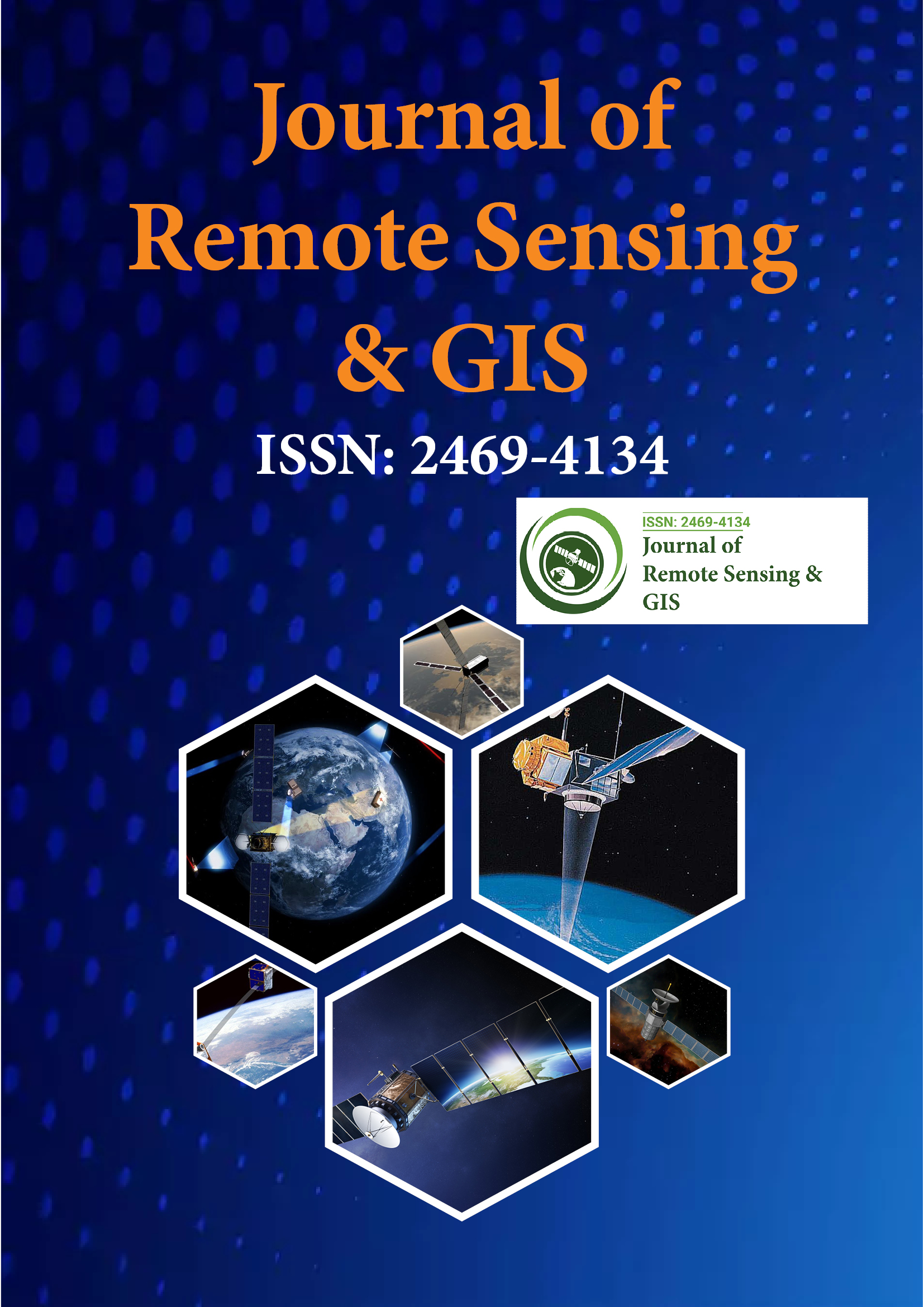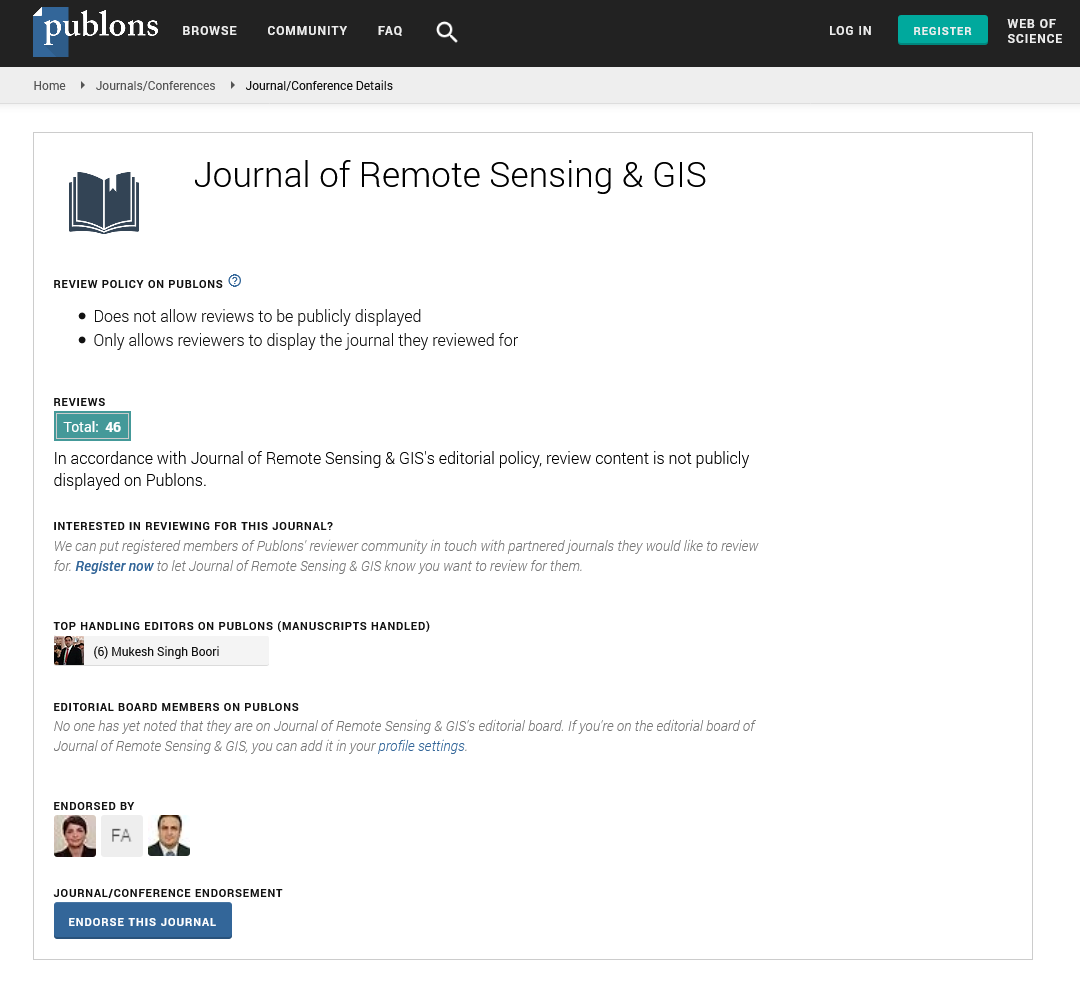Indexed In
- Open J Gate
- RefSeek
- Hamdard University
- EBSCO A-Z
- OCLC- WorldCat
- Publons
- International Scientific Indexing
- Euro Pub
- Google Scholar
Useful Links
Share This Page
Journal Flyer

Open Access Journals
- Agri and Aquaculture
- Biochemistry
- Bioinformatics & Systems Biology
- Business & Management
- Chemistry
- Clinical Sciences
- Engineering
- Food & Nutrition
- General Science
- Genetics & Molecular Biology
- Immunology & Microbiology
- Medical Sciences
- Neuroscience & Psychology
- Nursing & Health Care
- Pharmaceutical Sciences
Possibility of detection and identification of boats and vessels detected by day-night-band of VIIRS and synthetic aperture radar on RADARSAT
World Congress on GIS & Remote Sensing
August 01-03, 2016 New Orleans, Louisiana, USA
Ichio Asanuma, Takashi Yamaguchi, Jong Goel Park, Kenneth J Mackin and John Mittleman
Tokyo University of Information Sciences, Japan
Posters & Accepted Abstracts: J Remote Sensing & GIS
Abstract:
The day-night-band (DNB) of the visible infrared and imaging radiometer suite (VIIRS) on the Suomi-NPP detects light of the fishery boats on the open water at night, although the presence of clouds exhibits a limitation of detection. In contrast, the synthetic aperture radar (SAR) on the RADARSAT detects the boats and vessels on the water even through the clouds, although the observations are difficult in the midnight because of power consumption by SAR. The locations of vessels weighing greater than 300 tons are reported by the automatic identification system (AIS) with the maritime mobile service identity (MMSI) and are available to the public, although the locations of smaller fishery boats are not included. In this study, the locations of boats and vessels detected by DNB, SAR and reported by the AIS are plotted on the geophysical information system (GIS) so as to discuss the inconsistencies of locations introduced by the difference of observation time. Although the ship identifications are difficult for the data observed by the DNB and the SAR by itself, the MMSI data reported by the AIS with the interpolation methods exhibited the possibility to identify the large vessels from the data observed by DNB and SAR on the GIS analysis.
Biography :
Ichio Asanuma has received Doctor of Engineering from the Chiba University in 1999. He has been working on the satellite oceanography, especially on the primary productivity of the ocean using the visible and infrared bands. His main source of data are received by the receiving stations operated at the Tokyo University of Information Sciences, which receive data from the VIIRS on the Suomi-NPP, which covers the western boundary region of the Asia.
Email: asanuma@rsch.tuis.ac.jp

